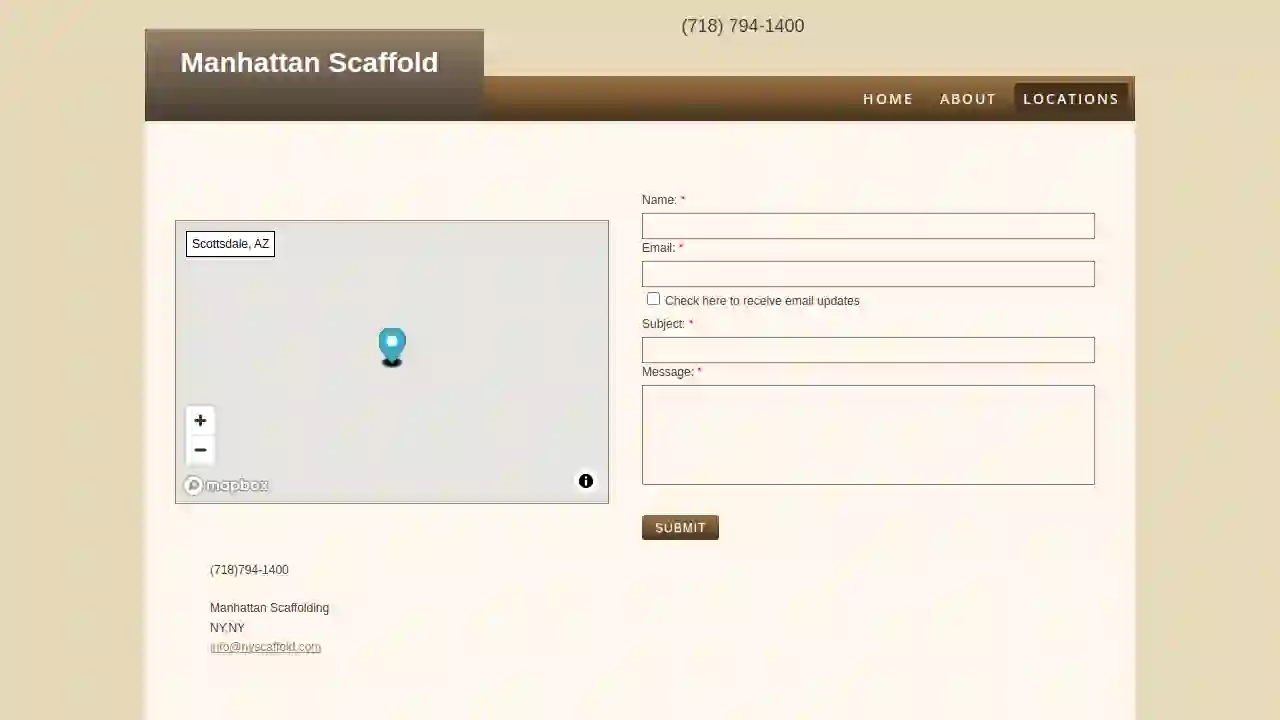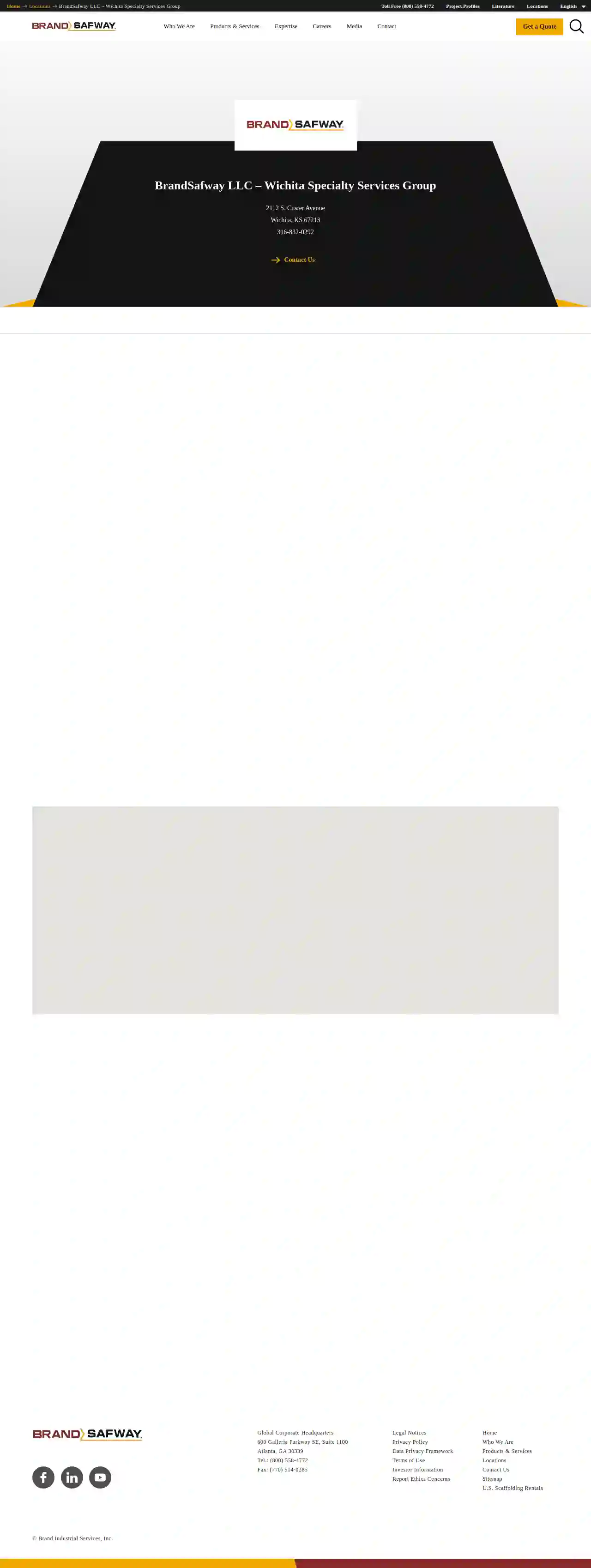Scaffolding Companies Prairie Village
Find Scaffold Services in Prairie Village
Get 3 FREE Scaffolding Specialists quotes for your project today! Compare profiles, reviews, accreditations, portfolio, etc... and choose the best deal.

Manhattan Scaffolding
NY, New York, USManhattan Scaffold is a family-run business with over 40 years of experience in scaffolding across the state of New York and along the East Coast. The company specializes in installing temporary platforms and sidewalk bridges for construction, maintenance, or repair purposes. Manhattan Scaffold uses a modular system of metal pipes or tubes, which is plentiful in New York, although it can be made from other materials like aluminum or bamboo in Asia. The company's services range from simple to complex projects and are heavily weighted towards building owners. Manhattan Scaffold also supplies and manages industrial scaffolding and insulation, requiring maintenance work.
- Services
- Why Us?
- Accreditations
- Gallery
Get Quote
Empire Sidewalk Shed & Scaffolding
54 reviewsNew York, NY, 156 5th Ave, 10010, USEmpire Sidewalk Shed & Scaffolding is a full-service company offering scaffold, hoisting, shoring systems, and other relevant equipment. We are committed to bringing excellence and comply with the highest standards of safety. Our experienced and reliable professionals make sure that we offer the best of both worlds to our valuable clients. From being the helping hand in new construction projects to carrying out high-end demolition jobs, we will be at your disposal. We are among one of the largest suppliers of scaffolding, temporary fences, construction fences, and other equipment in the USA. Our company is providing reliable solutions to the customers. Providing extremely versatile and robust working platforms to create safe and convenient working areas is our norm. Our core business is mainly focused on product rental, offering integral solutions and services in formwork and scaffolding technology.
- Services
- Why Us?
- Gallery
Get Quote
BrandSafway LLC – Wichita Specialty Services Group
4.713 reviews1234 Access Lane, Wichita, 67202, USBrandSafway is a leading provider of access solutions, offering a wide range of scaffolding, shoring, and forming solutions to meet the needs of various industries. With a strong commitment to safety, quality, and customer satisfaction, BrandSafway aims to provide innovative solutions that enhance productivity and efficiency. Their team of experienced professionals works closely with clients to understand their specific requirements and deliver tailored solutions.
- Services
- Why Us?
- Accreditations
- Our Team
- Testimonials
Get Quote
Hitech sidewalk shed & scaffolding
52 reviews1724 Amsterdam Ave, New York, 10031, USHiTech Sidewalk Shed & Scaffolding is a one-stop supplier of construction and general equipment. From painting to roofing, window installation, and brickwork, we have scaffolding to suit your needs. We believe that all problems can be solved as soon as they occur. We started this company because we felt there was a market for rental scaffolding. Our mission is to become your dependable and reliable source for any scaffolding needs in all five boroughs of New York City, Brooklyn, Queens, Bronx, Westchester and Manhattan. We are committed to providing you with our prime, hassle-free services on various projects through our reliable veterans. Get ahold of us 24 hours per day from Monday to Sunday. Our services include sidewalk shed rentals, scaffolding rental, pipe scaffolding rental, and hanging scaffold rental.
- Services
- Why Us?
- Accreditations
- Testimonials
- Gallery
Get Quote
Sidewalk Shed NYC & Pipe Scaffolding Contractors
290 Wadsworth, New York, 10040, USSidewalk Shed NYC is a company that specializes in providing high-quality sidewalk sheds and scaffolding solutions to customers in New York City. With a strong passion for delivering exceptional results, we strive to reach perfection in every project we undertake. Our commitment to customer satisfaction is unwavering, and we ensure that every demand is fulfilled. We are a certified contractor and have a team of skilled professionals who work together to deliver the best possible outcomes. Our services are designed to meet the unique needs of each customer, and we offer a range of options to suit different budgets and requirements. Whether you need a sidewalk shed for a small project or a large-scale construction project, we have the expertise and resources to deliver the best results. Contact us today to learn more about our services and how we can help you achieve your goals.
- Services
- Why Us?
- Accreditations
- Gallery
Get Quote- Sk
Sky Climber Access Solutions, LLC
4.56 reviewsKansas City, US- Services
- Why Us?
Get Quote - NY
NYC Best Scaffold
52 reviewsManhattan, US- Services
- Why Us?
Get Quote - NY
NYC Scaffolding Contractor
Manhattan, US- Services
- Why Us?
Get Quote
Over 2,353+ Scaffolding Contractors on our platform
Our scaffolding contractors operate in Prairie Village and surroundings!
ScaffoldingHQ has curated and vetted the Best Scaffolding Businesses in and around Prairie Village. Find a top & trustworthy business today.
Frequently Asked Questions About Scaffolding Companies
- Project Height and Access: The height of the structure and the accessibility of the working area are primary considerations.
- Load Capacity: The weight of workers, materials, and equipment that the scaffolding needs to support.
- Project Complexity and Shape: The shape and complexity of the structure may necessitate specialized scaffolding configurations.
- Ground Conditions: The type of ground (soft, uneven, sloping) will influence the scaffolding foundation and support requirements.
- Duration of Use: The length of time the scaffolding will be needed can impact the choice of system.
- Budget: Different scaffolding types have varying costs.
- Experience: 'How long have you been in business, and what experience do you have with projects like mine?'
- Licensing and Insurance: 'Are you fully licensed and insured, and can I see proof of coverage?'
- Safety Record: 'What are your safety procedures, and how do you ensure worker safety on the job site?'
- References: 'Can you provide references from previous clients?'
- Quotes and Costs: 'Can you provide a detailed quote that outlines all costs, including materials, labor, and any additional services?'
- Project Timeline: 'What is the estimated timeframe for scaffolding erection and dismantling?'
- Communication: 'How will you communicate with me throughout the project?'
- Regulations: Local regulations often specify minimum inspection intervals.
- Project Type and Duration: Long-term projects or those in challenging environments may require more frequent inspections.
- Weather Conditions: Severe weather (storms, high winds) can necessitate additional inspections.
- Any Alterations or Modifications: Any changes to the scaffolding structure require re-inspection.
- A temporary structure with a larger platform for workers and materials.
- Offers greater stability and working space.
- Suitable for tasks requiring movement and multiple workers.
- Used for higher elevations and more complex projects.
- Used for reaching specific points at height for short durations.
- Less stable than scaffolding, requiring more caution and balance.
- Not suitable for tasks involving heavy materials or extended work periods.
How do I choose the right type of scaffolding for my project?
What questions should I ask a scaffolding company before hiring them?
How often should scaffolding be inspected?
What is the difference between a scaffold and a ladder?
Scaffolding:
How do I choose the right type of scaffolding for my project?
- Project Height and Access: The height of the structure and the accessibility of the working area are primary considerations.
- Load Capacity: The weight of workers, materials, and equipment that the scaffolding needs to support.
- Project Complexity and Shape: The shape and complexity of the structure may necessitate specialized scaffolding configurations.
- Ground Conditions: The type of ground (soft, uneven, sloping) will influence the scaffolding foundation and support requirements.
- Duration of Use: The length of time the scaffolding will be needed can impact the choice of system.
- Budget: Different scaffolding types have varying costs.
What questions should I ask a scaffolding company before hiring them?
- Experience: 'How long have you been in business, and what experience do you have with projects like mine?'
- Licensing and Insurance: 'Are you fully licensed and insured, and can I see proof of coverage?'
- Safety Record: 'What are your safety procedures, and how do you ensure worker safety on the job site?'
- References: 'Can you provide references from previous clients?'
- Quotes and Costs: 'Can you provide a detailed quote that outlines all costs, including materials, labor, and any additional services?'
- Project Timeline: 'What is the estimated timeframe for scaffolding erection and dismantling?'
- Communication: 'How will you communicate with me throughout the project?'
How often should scaffolding be inspected?
- Regulations: Local regulations often specify minimum inspection intervals.
- Project Type and Duration: Long-term projects or those in challenging environments may require more frequent inspections.
- Weather Conditions: Severe weather (storms, high winds) can necessitate additional inspections.
- Any Alterations or Modifications: Any changes to the scaffolding structure require re-inspection.
What is the difference between a scaffold and a ladder?
Scaffolding:
- A temporary structure with a larger platform for workers and materials.
- Offers greater stability and working space.
- Suitable for tasks requiring movement and multiple workers.
- Used for higher elevations and more complex projects.
- Used for reaching specific points at height for short durations.
- Less stable than scaffolding, requiring more caution and balance.
- Not suitable for tasks involving heavy materials or extended work periods.